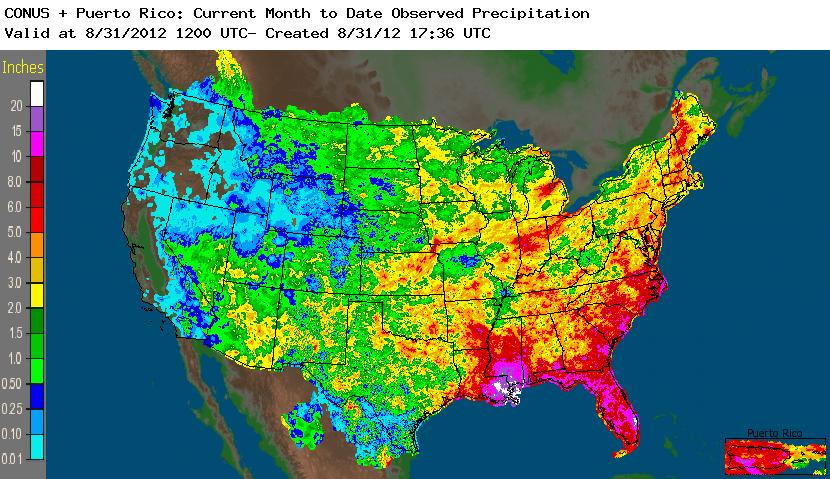Heavy Precipitation

(Photo Courtesy: Dailymail UKLinks to an external site.)
Rain usually is not a hazard to any aircraft; however, heavy rain can reduce visibility. Usually for pilots flying VFR, if they encounter heavy rain, they will usually fly around the heavy precipitation areas, going to regions with better visibility.
Other than visibility, rain can be injected into turbine engine. Water in turbine engine can causes the engine to stop working.
The most dangerous form of precipitation is the rain associated with thunderstorms. Severe thunderstorms contain high precipitation, causing the turbine engines to ingest a large quantity of water and the engine to stop functioning.
Precipitation ForecastsLinks to an external site.
Precipitation forecasts are very important and weather radar images are crucial to those aircraft without radar. By communicating with weather briefers on the ground, pilots can view radar images and figure out where the heavy precipitation areas are. They can then change routes to avoid regions with heavy rain.

(Photo Curtesy: NOAALinks to an external site.)
Thunderstorm
Thunderstorms are formed due to the warm air rising inside the cloud. Intensity of thunderstorms cannot be indicated by its visual appearance.

(Photo Courtesy: Pinterest Links to an external site.)
If a pilot has accidentally flown into a thunderstorm, the whole aircraft may experience upward or downward fluctuations, random rolling motions, and violent shaking. Also, during extreme turbulence, when the pilots are trying to move the control yoke violently to ensure their control over the aircraft, rapid and violent movement of the yoke may lead aircraft to break, exceeding its structural limits.
Furthermore, several other hazards are associated with thunderstorms.
- Turbulence: Turbulence is usually caused by the random motions of eddies inside the clouds. Convective turbulence is related to thunderstorms.
- Lightning: lightning occurs due to the movement of ice crystals and hailstones in the thunderstorm. Ice crystals, with positive charges, usually go up to the top of the thunderstorm, and hailstones, with negative charges, usually go down to the bottom of the thunderstorm. As positive and negative charges collide, electrical charges and voltage difference accumulate, the thunderstorm is ionized, and ultimately, lightning occurs. Aircraft usually do not attract electricity, but the skin of the aircrafts can conduct electricity. Lightning rarely causes any damage to the aircrafts.

(Photo Courtesy: TravellerLinks to an external site.)
- Hailstorms: Hailstones are large, irregular ice balls that fall from thunderstorms. They can lead to many problems for the aircraft. They can break windscreen, so pilots will experience heavy rain and strong winds. Hailstones can also break leading edges of wings or tails, increasing the resistance against winds.
Knowing the intensity and the location of thunderstorms is extremely important for planning routes for aviation. Thunderstorm forecast has been done by the NOAA/National Weather Service.

(Photo Courtesy: NOAALinks to an external site.)
Icing
Supercooled droplets are water droplets remain as liquid at below-freezing temperatures, but they can instantly freeze as they collide with solid things.
Supercooled droplets will only form when there is liquid in the atmosphere, so if aircraft are flying through a region of dry air, then icing is not a hazard for aircraft. Supercooled droplets will also not form when the atmosphere is so cold that there are only ice crystals. These ice crystals will not freeze on aircrafts and will not be a hazard.

(Photo Courtesy: NASALinks to an external site.)
Ice on aircraft is extremely hazardous, because it can add weight to the airplanes, decrease the thrust, and increase the drag. Also, supercooled droplets can go into engine, forming ice on the engine and reducing air flow.
,
 icons at the top right corner of the subsection.
icons at the top right corner of the subsection.